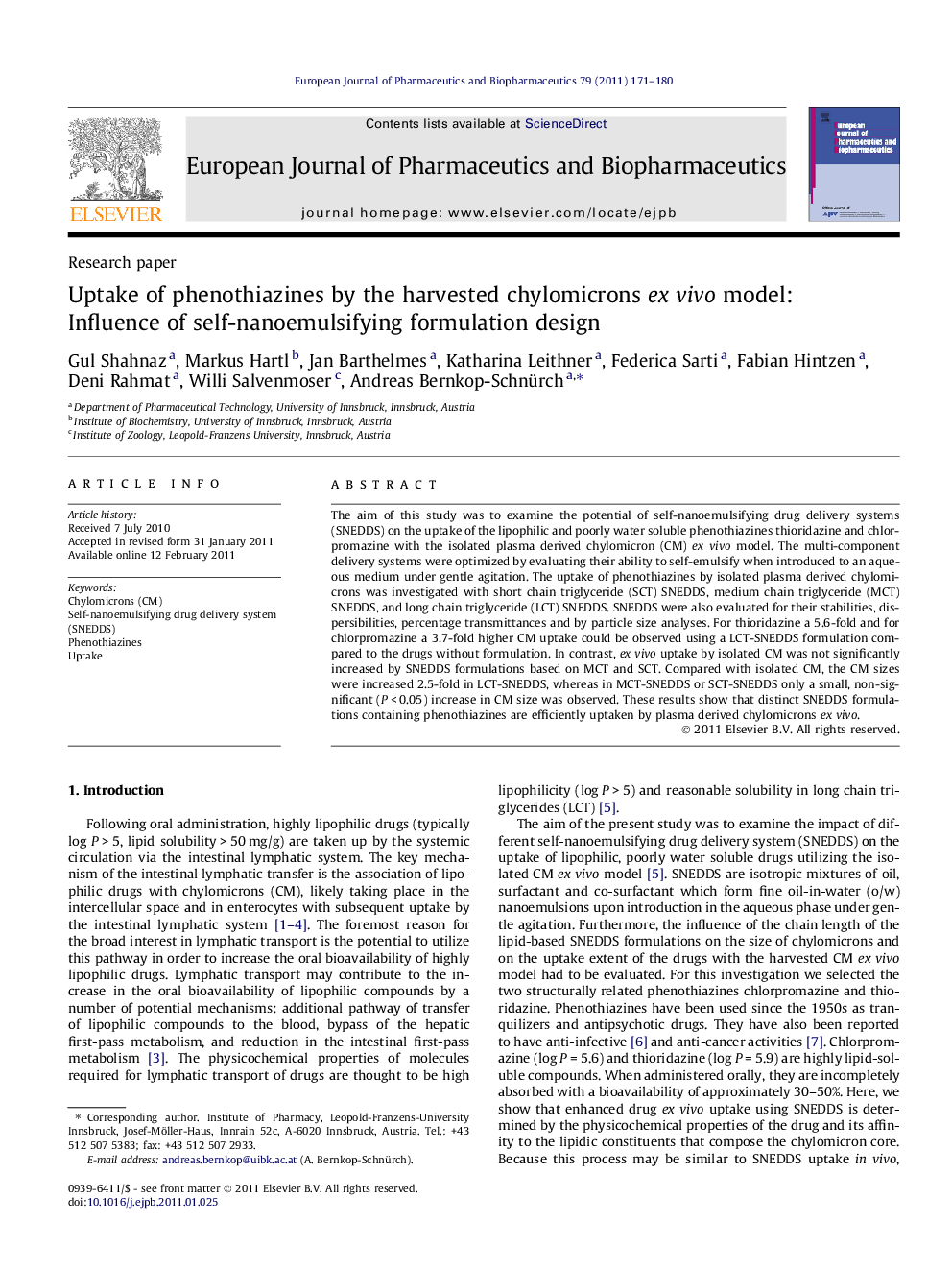| Article ID | Journal | Published Year | Pages | File Type |
|---|---|---|---|---|
| 2085452 | European Journal of Pharmaceutics and Biopharmaceutics | 2011 | 10 Pages |
The aim of this study was to examine the potential of self-nanoemulsifying drug delivery systems (SNEDDS) on the uptake of the lipophilic and poorly water soluble phenothiazines thioridazine and chlorpromazine with the isolated plasma derived chylomicron (CM) ex vivo model. The multi-component delivery systems were optimized by evaluating their ability to self-emulsify when introduced to an aqueous medium under gentle agitation. The uptake of phenothiazines by isolated plasma derived chylomicrons was investigated with short chain triglyceride (SCT) SNEDDS, medium chain triglyceride (MCT) SNEDDS, and long chain triglyceride (LCT) SNEDDS. SNEDDS were also evaluated for their stabilities, dispersibilities, percentage transmittances and by particle size analyses. For thioridazine a 5.6-fold and for chlorpromazine a 3.7-fold higher CM uptake could be observed using a LCT-SNEDDS formulation compared to the drugs without formulation. In contrast, ex vivo uptake by isolated CM was not significantly increased by SNEDDS formulations based on MCT and SCT. Compared with isolated CM, the CM sizes were increased 2.5-fold in LCT-SNEDDS, whereas in MCT-SNEDDS or SCT-SNEDDS only a small, non-significant (P < 0.05) increase in CM size was observed. These results show that distinct SNEDDS formulations containing phenothiazines are efficiently uptaken by plasma derived chylomicrons ex vivo.
Graphical abstractSchematic diagram illustrating the mechanism of intestinal drug transport from self-nanoemulsifying drug delivery systems (SNEDDS).Figure optionsDownload full-size imageDownload as PowerPoint slide
